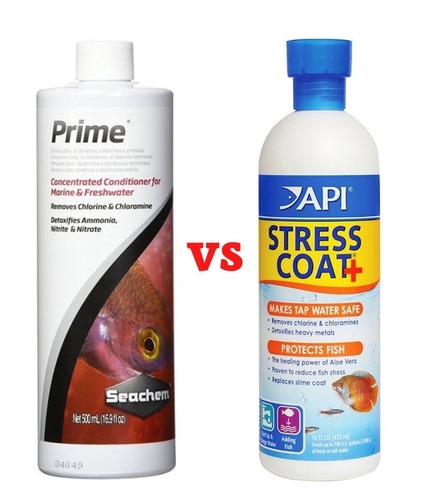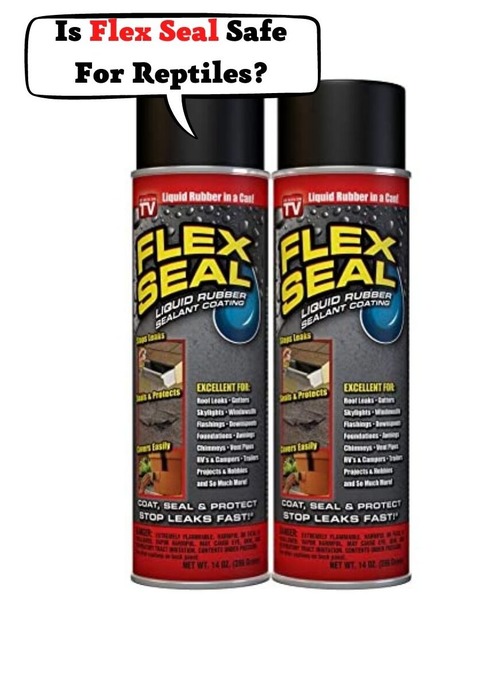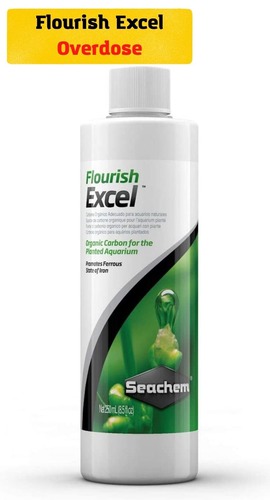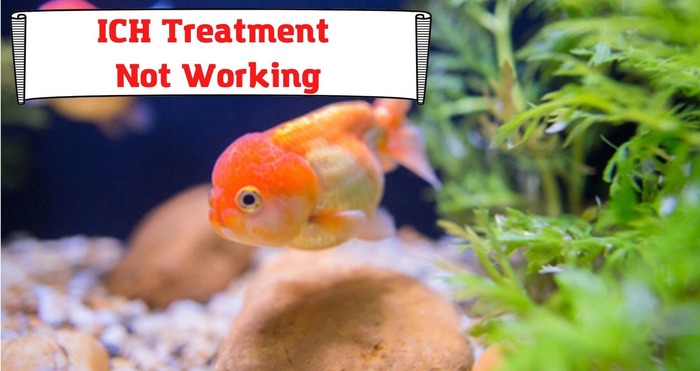
ICH is undoubtedly one of the complex diseases that every aquarium wants to avoid. Many of you might even be taking proactive measures like putting every new fish in the isolation tanks and propagating medicines well in advance. But still, you cannot avoid ICH. Don’t worry. It is not your mistake. The ICH is so widespread that there is a significant chance that every new fish (irrespective of looking healthy or going through the quarantine) might have.
When found with this problem, we are sure you would have been actively pursuing the treatment. But is your current treatment not working? It is possible in a few cases, and you don’t have to think it is as anything unusual; instead, you’ll find many people complaining about it. In this article, we’ll share a few reasons why your ICH treatment might not be working and how you can upgrade it so that your fish can regain their health.
Here’s an overview of topics you’ll find in this article:
- Reason for poor treatment results
- Is ICH transferrable?
- How to treat ICH?
Why is the current treatment not working?
ICH is a white spot disease where a parasite holds onto the fish as a host and consumes all the nutrients to feed before leaving the fish in a problematic health situation. The worst part is that after leaving the host, the parasite gets into the dormancy phase, where it replicates and then finds a new host to consume their energy, thus propagating the entire tank with the disease. Usually, the noticeable spots on the fish multiply within hours, indicating a particular type of ICH. This is the most common one, and the medicines you find for ICH treatment usually cater to this problem.
Stress ICH
However, it is not the only ICH type that can be ingesting your tank. If the number of white spots on the fish remains the same or changes in minute quantities, then your aquarium has a different ICH type, and its treatment will be different. You can call this ICH stress ICH.
One of the other indicators of finding the stress ICH in your fish is that it does not spread on the fish’s entire body but the fins only. You don’t have to be worried about finding the existence of the other ICH type, as this one is not contagious. Its source is different so is its treatment. You can consider it a hormonal problem, which a single fish in your aquarium might go through. So, you can’t expect the parasite-killing medicine to impact a hormonal problem that your fish is going through.
Fish have become immune to it
If your fish have become immune to a treatment, the methods you’ve been using won’t work that well. This is likely possible if you have bought your pet from a nearby shop. They have treated it for the ICH already (not sure if the treatment would have been successful), so exposing the fish to medicine again or incomplete treatment can make them immune to it, creating such a problem.
Is ICH capable of transferring to humans?
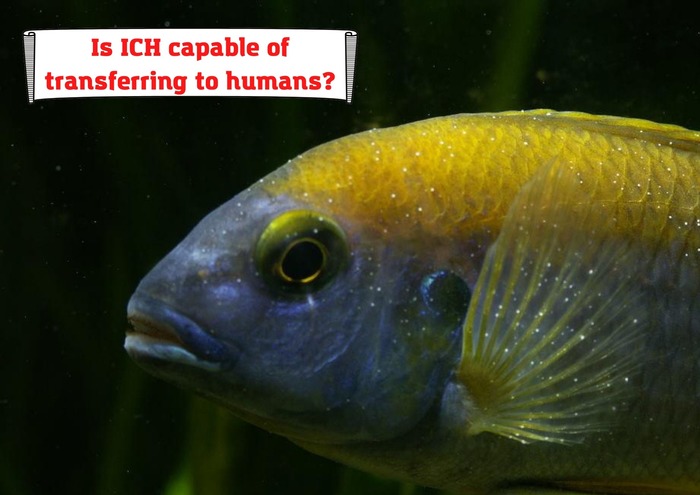
Luckily, you don’t have to worry about transferring ICH to humans. So, you can check the water and change it regularly as you had been doing earlier. However, do not forget to wash your hands once you are done dealing with the aquarium water.
ICH cannot harm you, but the parasitic ICH can transfer from one tank to another if you have more than one tank. So, the products you might be using for the tank’s upkeep should be avoided between the tanks. Once the disease goes away, you can sterilize the instrument (this is better) or wash it properly with hot water.
Treatment that will work
You are sure looking for the solution that will work on the ICH irrespective of your fish’s problems. So here are a few alternatives available.
Using Aquarium Solution Ich-X
Aquarium Solution Ich-X is particular medicine that you can get from aquarium stores. Administering this medicine can help your fish gain better health. Here’s the complete process for using this medicine:
Identify if the disease is ICH
Before starting any new treatment for your fish, identify the ICH precisely, as this treatment is not for the stress ICH or similarly looking Velvet disease.
To ensure that your fish is suffering from ICH, you should wait for 24 hours, at least having a precise count of the spots you can observe on the fish’s skin. If the spots increase within 24 hours, you can continue with this treatment.
Put the medicine in water
Aquarium Solution Ich-X is the primary medicine you have to utilize for the treatment. The bottle contains the right dosage you have to use in different water levels. Let us explain it here as well. You’ll have to put 5 ml in 10 gallons of aquarium water. Once you add this medicine to water, wait for 24 hours.
Note: if you think your fish species is small or highly sensitive and you should lower the dose, we will recommend you not to do it as it will not remain strong enough to kill the ICH, and the entire practice will be of no use.
Change the water and add more medicine
Go for one-third water change of your aquarium. Add 5 ml per 10 gallons of the medicine again. The addition of medicine must be for the replaced water and the complete tank. We’ll highlight again that don’t consider this medicine as an overdose. The incomplete administration of the medicine will not yield complete benefits.
Continue the medication
You’ll have to change one-third of the water every day and insert the medicine, considering the water quantity in the tank (5 ml for 10 gallons). You’ll have to continue doing this for as many days as you see the white spots in the fish, plus an extra day. This time depends on the strength of your fish’s disease and the past treatments you have done for ICH.
Leave the medicine in water
Once your fish are healthy, you don’t have to go for a massive water change to remove all the medicine from the tank. Just let it stay there and perform the water change according to your own set frequency. The medicine will be removed over time.
Treat for secondary infections
Now when the ICH has been obliterated, there must be multiple parasitic wounds on the skin of the fish that will make it prone to other infections and diseases. So, you might have gotten rid of the ICH, but there will be another round of treatment that you’ll have to manage.
Salt and temperature treatment
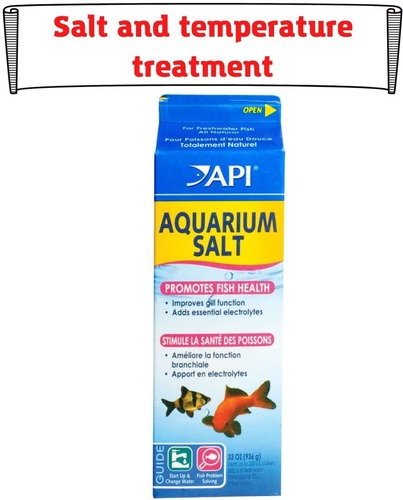
A few experts even recommend keeping all medications out of your tank and treating the ICH with salt and higher temperature, nothing else.
In this treatment, you have to put salt in your tank and raise the temperature to 86 degrees (gradually). It will help in treating the ICH. But this is a timely process, and not every fish can respond to this treatment.
But introducing medicine in the tank can pose an additional stress factor if the fish don’t react positively. So, you’ll have to analyze this aspect for your fish and tank before choosing any particular treatment.
Summing up
ICH is not a deadly disease that can kill fish immediately (unless your fish have a compromised immune system). But you cannot let your fish stay with it as they will eventually die. So, the sooner you identify the disease and start treating it properly, the better it will be for your fish.
- Pleco Not Eating. Main Reasons Your Pleco Is Starving - February 21, 2022
- Foxface Fish Sting: Any Danger? And What To Do To Relieve Pain? - February 20, 2022
- White Stuff Coming Out Of Snail – Dangerous? Should You Worry About It? - February 19, 2022


